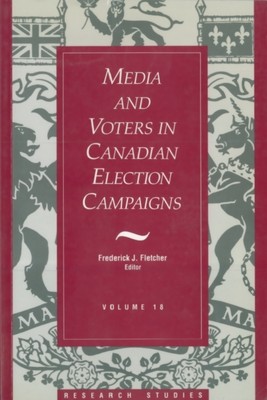
- We will send in 10–14 business days.
- Publisher: Dundurn Press
- Year: 1991
- Pages: 258
- ISBN-10: 1550021141
- ISBN-13: 9781550021141
- Format: 15.2 x 22.9 x 1.6 cm, softcover
- Language: English
- SAVE -10% with code: EXTRA
Media and Voters in Canadian Election Campaigns (e-book) (used book) | bookbook.eu
Reviews
Description
This volume presents five studies on the relationship between the media and voters. Each examines some aspects of the flow of information to voters during election campaigns and all reflect the assumption that the right to vote must include the right of access and sufficient information to make an informed decision.
In separate studies, Jean Crête and Robert MacDermid examine existing studies and data on the relationship between attention to media and voter information and behaviours. Both studies discuss methods for improving voter information.
Televised leaders debates have become an important feature of democratic elections. Cathy Widdis Barr examines the effects of these debates on Canadian voters in 1984 and 1988, concluding that they were an important source of campaign information for less-informed voters. Robert Bernier and Denis Monière provide the most comprehensive comparative overview available on the importance of televised leaders debates and the policy issues surrounding them in democratic countries.
Finally, Lyndsay Green examines the potential of new communication technologies for improving the information available to voters during campaigns, with particular attention to voters with special information needs.
Taken together, the five studies provide a useful overview of the effectiveness of various forms of campaign communication in informing voters. Much of the material presented here is not readily available elsewhere.
EXTRA 10 % discount with code: EXTRA
The promotion ends in 19d.18:01:21
The discount code is valid when purchasing from 10 €. Discounts do not stack.
- Publisher: Dundurn Press
- Year: 1991
- Pages: 258
- ISBN-10: 1550021141
- ISBN-13: 9781550021141
- Format: 15.2 x 22.9 x 1.6 cm, softcover
- Language: English English
This volume presents five studies on the relationship between the media and voters. Each examines some aspects of the flow of information to voters during election campaigns and all reflect the assumption that the right to vote must include the right of access and sufficient information to make an informed decision.
In separate studies, Jean Crête and Robert MacDermid examine existing studies and data on the relationship between attention to media and voter information and behaviours. Both studies discuss methods for improving voter information.
Televised leaders debates have become an important feature of democratic elections. Cathy Widdis Barr examines the effects of these debates on Canadian voters in 1984 and 1988, concluding that they were an important source of campaign information for less-informed voters. Robert Bernier and Denis Monière provide the most comprehensive comparative overview available on the importance of televised leaders debates and the policy issues surrounding them in democratic countries.
Finally, Lyndsay Green examines the potential of new communication technologies for improving the information available to voters during campaigns, with particular attention to voters with special information needs.
Taken together, the five studies provide a useful overview of the effectiveness of various forms of campaign communication in informing voters. Much of the material presented here is not readily available elsewhere.


Reviews